
Frederick James Archer, also known by the nickname The Tin Man, was an English flat race jockey of the Victorian era, described as "the best all-round jockey that the turf has ever seen".

Francis Buckle (1766–1832), also known as Frank Buckle and known to the British horse racing public as "The Governor", was an English jockey, who has been described as "the jockey non-pareil" of the opening quarter of the 19th century, and the man who "brought respectability to race-riding". He won at least 27 British Classic Races during his career, a record which would not be beaten for over 150 years.
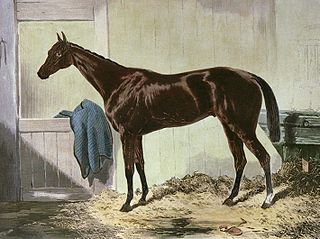
Blue Gown was a British Thoroughbred racehorse that was the winner of the 1868 Epsom Derby and Ascot Gold Cup. He was one of the best colts of his generation at two, three years and four of age, but his form declined in 1870 after an unsuccessful period in France. He was retired to stud, where he had considerable success as a sire of winners in Germany. Blue Gown died in 1880 while being shipped to the United States.
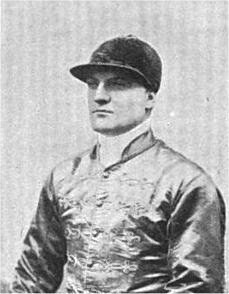
Herbert Mornington Cannon (1873–1962), commonly referred to as Morny Cannon, was a six-time Champion jockey in the United Kingdom in the 1890s. He holds the records for the most wins by a jockey in the Craven Stakes, Coronation Stakes and Prince of Wales's Stakes. His most famous mount was Flying Fox who won the British Triple Crown in 1899. He was the son of English jockey and trainer Tom Cannon (1846–1917). In his day he was considered the most perfect master of style and he epitomised "the art of jockeyship".

Samuel "Sam" Chifney, also known as Sam Chifney Sr., Sam Chifney the Elder or Old Sam Chifney to distinguish him from his son, was an English jockey. He was a pioneer of professional race-riding, developing a trademark late finishing style, known as the 'Chifney rush' and was the retained jockey of the Prince of Wales. He became the leading horseman of his day, winning four runnings of the Oaks and one of the Derby, but his career ended in ignominy after a scandal around a ride on the Prince of Wales's horse, Escape. Despite inventing a bit for horses that is still in use today, he died in debtors' prison in London.
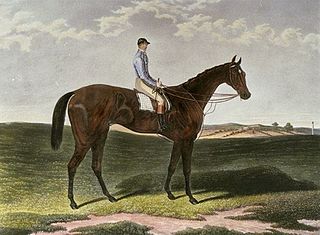
Musjid (1856–1865) was a British Thoroughbred racehorse and sire. In 1859, he won both of his races including The Derby, in which he landed a huge gamble for his owner despite concerted efforts to prevent him winning. Musjid developed leg problems after the Derby and never ran again. He was retired to stud, where he made little impression before his early death in 1865 from a stomach rupture.
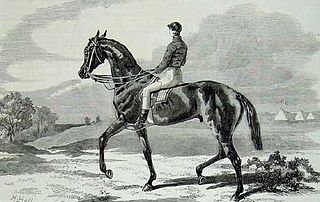
Beadsman (1855–1872) was a British Thoroughbred racehorse and sire. In a career that lasted from July 1857 to June 1858, he ran seven times and won five races. He was unbeaten as a three-year-old and recorded his most important success in the 1858 Epsom Derby. He was retired to stud at the end of the season and became a successful stallion, siring the winners of several important races.

Tom Cannon Sr. was a British flat racing jockey and trainer. He won 13 British classics as a jockey, becoming champion in 1872. As a trainer, he trained classic winners, as well as winners over jumps, including the 1888 Grand National. He was the father of four jockey sons, including the six-times champion, Morny Cannon, and the great-grandfather of eleven-times champion, Lester Piggott.
John Arnull (1753-1815) was an English flat racing jockey. He was the first man to ride five Epsom Derby winners and a member of the dominant race riding family in England in the late 18th and early 19th Centuries.
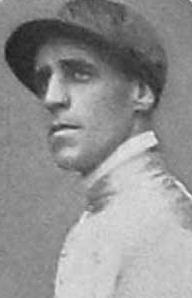
Joseph Childs (1884–1958) was a French-born, British-based flat racing jockey. He won fifteen British Classics in a 35-year career, the last ten years of which were spent as jockey to King George V. He was known for riding a slow, waiting race, and also for having a short temper which regularly saw him at odds with his trainers and owners.

Samuel Chifney Jr. was an English jockey. He was the younger son of a prominent 18th century jockey, also called Samuel Chifney. In terms of talent, he reportedly outshone all his peers, but "he owned a self-destruct button and had a fatal tendency to press it". This failing meant "his talent was not converted into the kind of concrete achievement that stands the test of time".
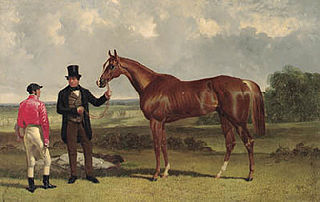
Job Marson (1817–1857) was an English classic-winning jockey, whose most famous partnership was with Voltigeur, winner of the 1850 Derby and St Leger.

Henry "Harry" Custance was a British jockey who won the Derby three times in the 1860s and 1870s.
Frederick George Allsopp was a British Derby-winning jockey.

Tom Chaloner was an English jockey who won ten British Classic races, each of them except the 1,000 Guineas at least once. Although he won races across the country, his most notable came in the north of England.
JamesSnowden was a British Classic winning jockey.

Thomas French (1844–1873), born in Liverpool, was a Derby winning English jockey.

John "Knickerbocker" Reiff, often called Johnny, was an American flat racing jockey, whose greatest successes came in Great Britain where he won three Classics.
Michael Beary was an Irish flat racing jockey, who won four British Classics and eight Irish Classics in a career that spanned from the 1910s to the 1950s. He was Irish Champion Jockey in 1920.
Eric Ephraim Smith was an English flat racing jockey, who rode over 2000 winners, including the winners of three Classics, in a career spanning over 30 years.















